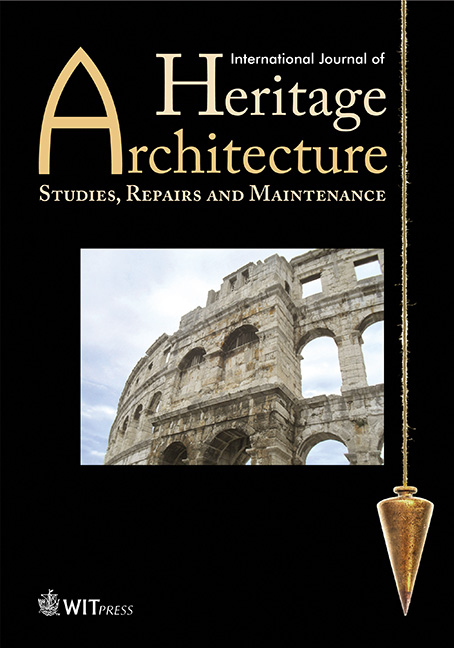THE DIALOGUE BETWEEN ANCIENT AND MODERN MATERIALS IN THE RESTORATION OF A COLLAPSED ANCIENT CHAPEL
Price
Free (open access)
Volume
Volume 2 (2018), Issue 2
Pages
9
Page Range
283 - 292
Paper DOI
10.2495/HA-V2-N2-283-292
Copyright
WIT Press
Author(s)
ANTONIO GALIANO-GARRIGÓS, VÍCTOR ECHARRI-IRIBARREN, ANGEL-BENIGNO GONZÁLEZ-AVILÉS & MARÍA DOLORES ANDÚJAR-MONTOYA
Abstract
While facing a restoration of an ancient building, sometimes a reconstruction is needed. The decision to use modern materials could be quite conflictive, especially when the building is to be in use once again and the visitors see the outcome. This was the case of the Chapel of the Holy Sepulchre, Orihuela (Alicante). It was built as a satellite cult place from the abbey of San Francisco, and it was placed as a Calvary at the top of a hill close to the main building. Over the years, this building became part of the neighbourhood’s identity and one of the most important anchor points for the inhabitants of the area.
Neglected maintenance made the building collapse at the end of the 1990s. The City Council of Orihuela acquired the building in 2007 and planned to restore it, but architects faced a problem regarding restoration, as most parts of the building had collapsed.
The restoration process of the chapel, especially in terms of structure, is based on the relation between modern and traditional materials, a final touch that did not change the feeling of identity that the inhabitants once had over the original chapel.
Keywords
heritage and debate, restoration, restoration techniques, structural reinforcement




